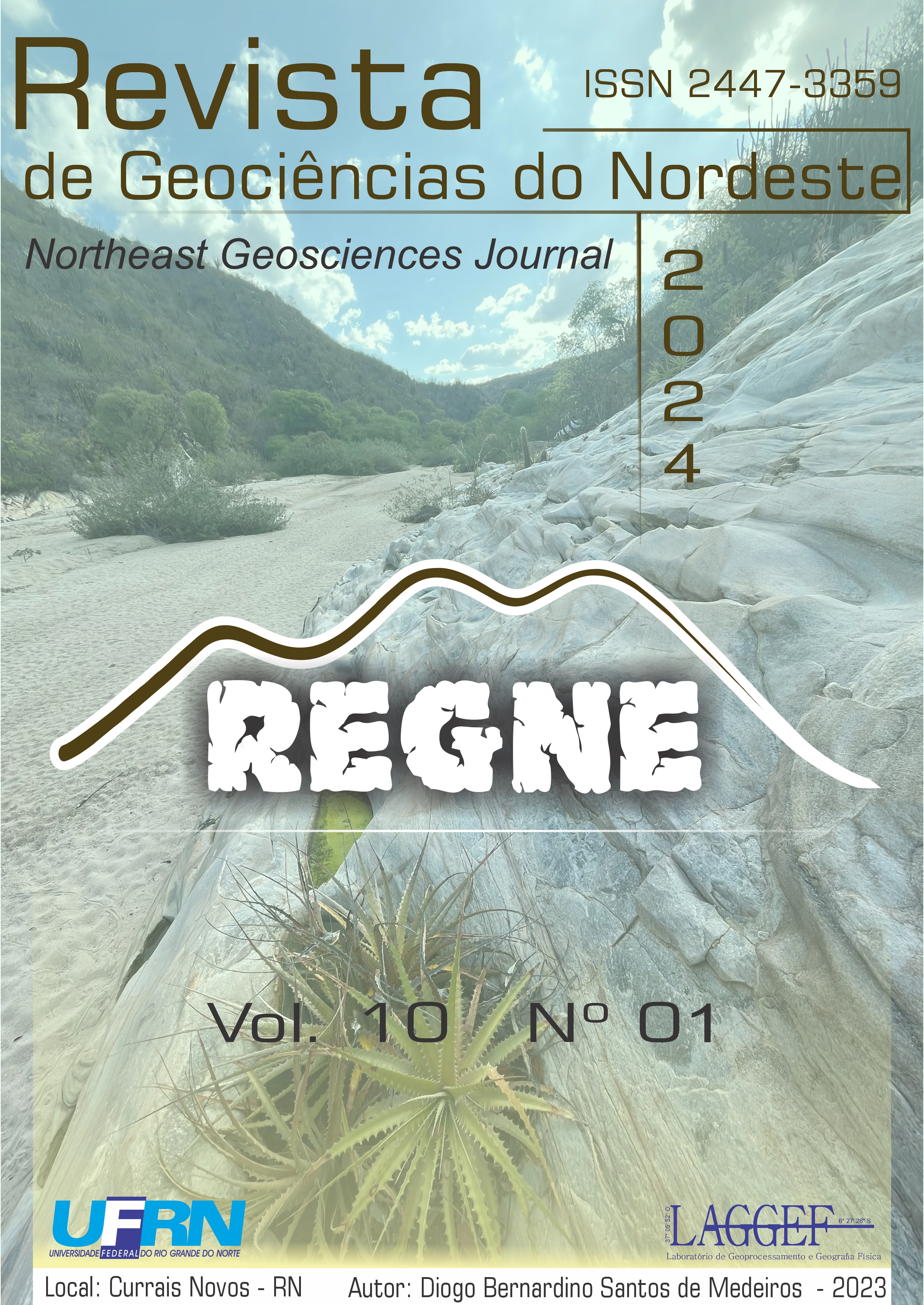Gravimetric inversion applied to the study of the basement relief of the Recôncavo-Tucano-Jatobá Rift System in Northeast Brazil
Gravimetric inversion applied to the study of the basement relief of the Recôncavo-Tucano-Jatobá Rift System in Northeast Brazil
DOI:
https://doi.org/10.21680/2447-3359.2024v10n1ID34802Abstract
This article presents results from the implementation of an inverse modeling algorithm that considers the Bouguer anomaly signal to estimate and gain a better understanding of the boundary between the sedimentary package and the basement of the sub-basins within the Recôncavo-Tucano-Jatobá rift system. The algorithm for modeling the basement relief is considered a medium constituted by a set of discrete two-dimensional prisms with fixed density contrasts between sediment and basement and variable depth. Initially, it was applied to synthetic models, resulting in depth variation curves of the basement top that fit well with the true model. Subsequently, this methodology was applied to satellite gravity data obtained from the high-resolution Earth gravity field model called SGG-UGM-2. The results of this application were compared with the depth of the Moho interface estimated beneath the studied units and obtained through the Parker-Oldenburg methodology. The information produced here allowed the interpretation of the gravity anomaly over the depositional space of the studied basins and the geometry of their basement. Together with the knowledge of their stratigraphy, this interpretation may be analyzed to characterize the region's reservoirs. By interpreting the basement relief in conjunction with the Moho topography, this study portrays the geotectonic evolution of the aulacogen and its association with estimating the depocenters of the Recôncavo, Tucano, and Jatobá sub-basins.
Downloads
Downloads
Published
How to Cite
Issue
Section
License
Copyright (c) 2024 Notheast Geoscience Journal

This work is licensed under a Creative Commons Attribution 4.0 International License.


 Português (Brasil)
Português (Brasil) English
English







